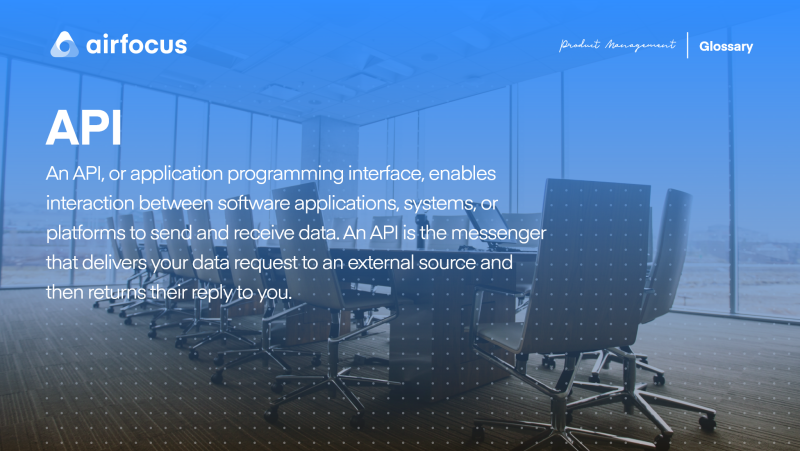API
What is an API?
Definition of an API
An API, or application programming interface, enables interaction between software applications, systems, or platforms to send and receive data. An API is the messenger that delivers your data request to an external source and then returns their reply to you.
The word “application” can be used to refer to many things. In the context of an API, it can be a piece of software with a distinct function, a small part of an app, a whole app, or a whole server.
APIs are used for different purposes across all types of software and can be open to the public, restricted between strategic partners, for internal use only, or a composite of other data and service APIs.
Examples of APIs today
We all interact with APIs on a daily basis, even if we aren’t aware of it!
Perhaps you’ve gone to log in or register with a website, and seen the option to ‘login using Facebook, Google or Apple’? This feature is enabled by an API; authenticating the user’s identity, without actually logging into the social media account at all.
Using PayPal to buy directly from an e-commerce store is another example of API functionality. The e-commerce site can access the information it needs to complete the transaction, but cannot access the customer’s sensitive data.
We even rely on APIs when looking for a cheap vacation. When searching a price comparison site, the site aggregates multiple options and showcases the cheapest ones by using third-party APIs to collect information from online travel agents or airlines.
How do APIs work?
APIs work by acting as the link between the user and the service provider, with the API software facilitating an exchange to take place. Whether that is an information request, an e-commerce transaction, sending money to a bank account, or any other situation requiring a two-way data transfer.
When you perform an action on a website, the API will send online data related to your action to its server. Subsequently, the server receives and interprets the data, completes the necessary activity, and then returns the outcome to the application. The application interprets the outcome data and shows you the answer in an understandable format.
Benefits of using APIs
The development of APIs has enabled many business innovations and workflow efficiencies, here’s just three of the biggest benefits of using APIs:
Automation
When using an API managed by computers, less human effort is required and workflows can be easily updated to become faster and more productive. Furthermore, new content and information can be published and shared with your entire audience quickly and efficiently across all channels.
Developer efficiency and innovation
APIs empower developers to be more productive by reusing code in complex but repetitive processes. They don’t need to start from scratch as the API specifies how to assemble software components in a program. APIs exist to make it easy to interface with other developers' applications.
Improved value proposition
By using APIs made available by companies such as Amazon, Salesforce, or Twitter, an application can integrate those services into their own systems to make themselves more attractive to customers.
Challenges of using APIs
APIs carry a number of watch-outs, too — the most important being security.
Poor integration means that an API can be vulnerable to attacks, yet data breaches or losses have huge ramifications when it comes to the finances and reputation of a company. Attacks can also negatively affect the customers of an application as their data and information are compromised.

General FAQ

Glossary categories
Experience the new way of doing product management

Experience the new way of doing product management







